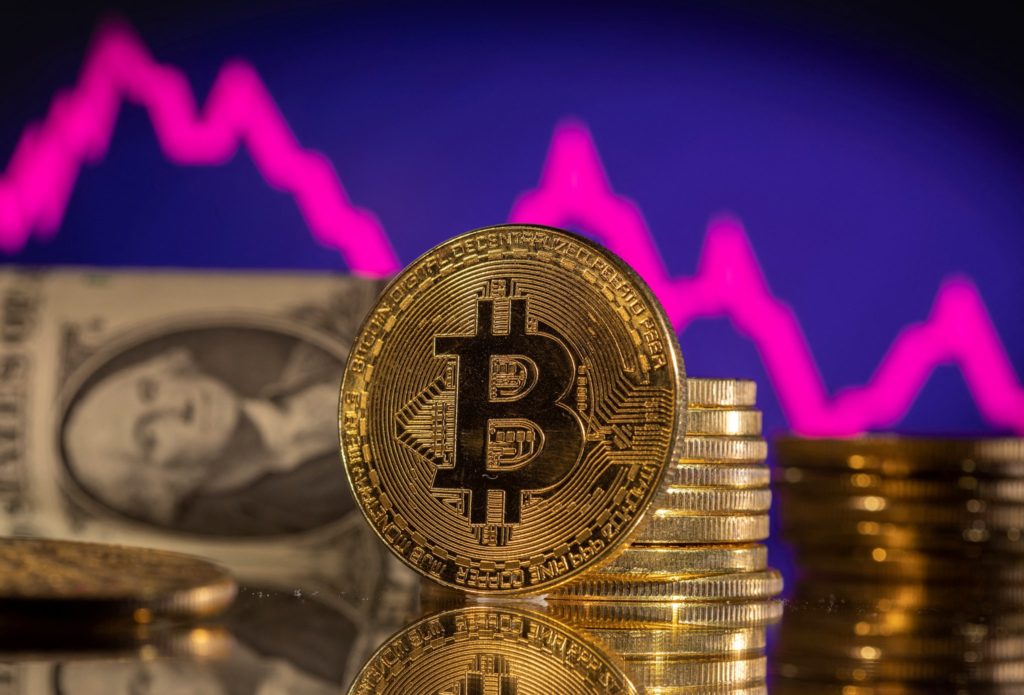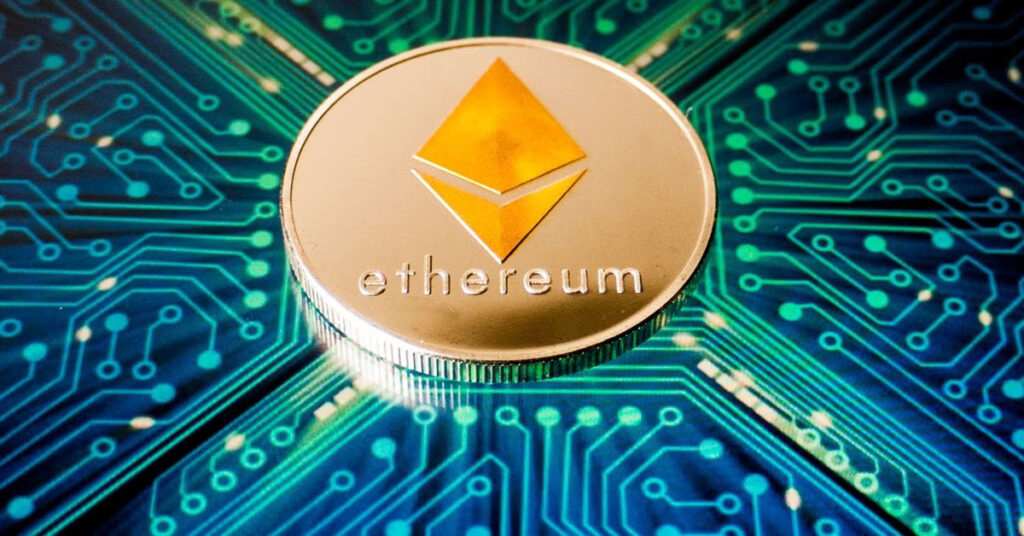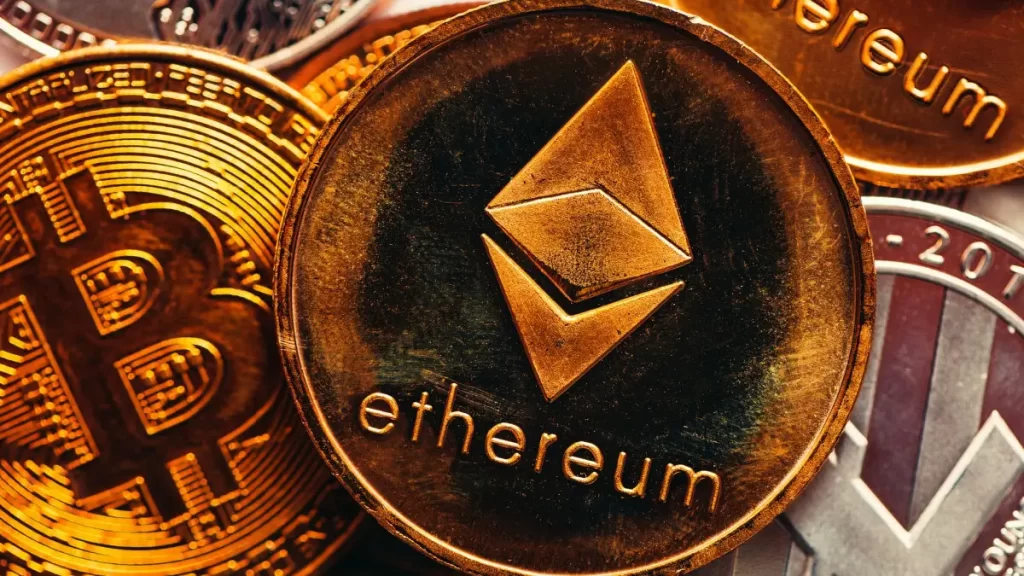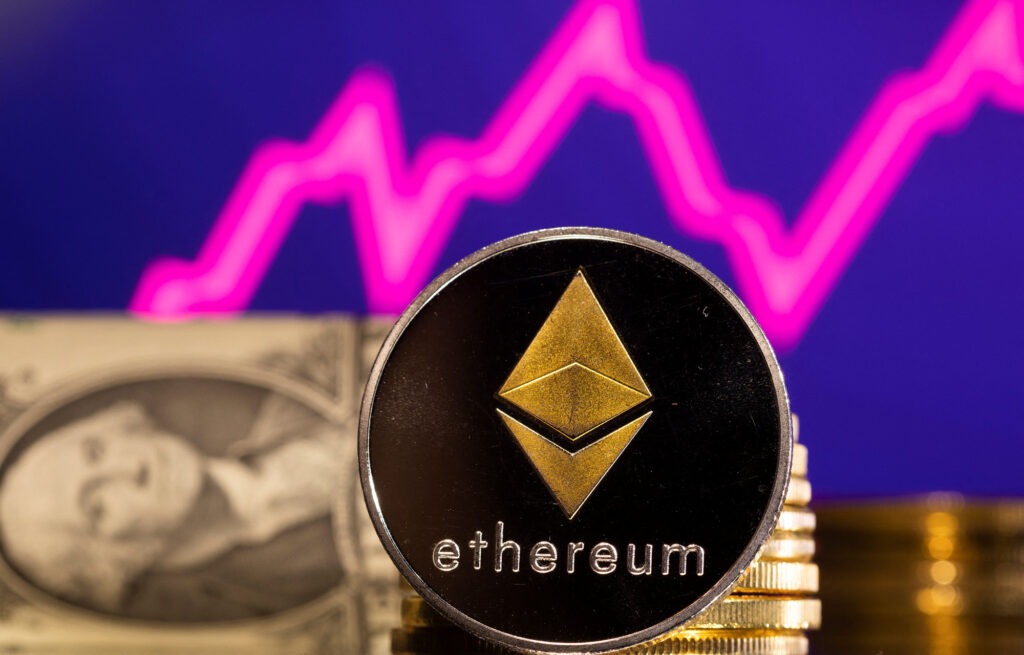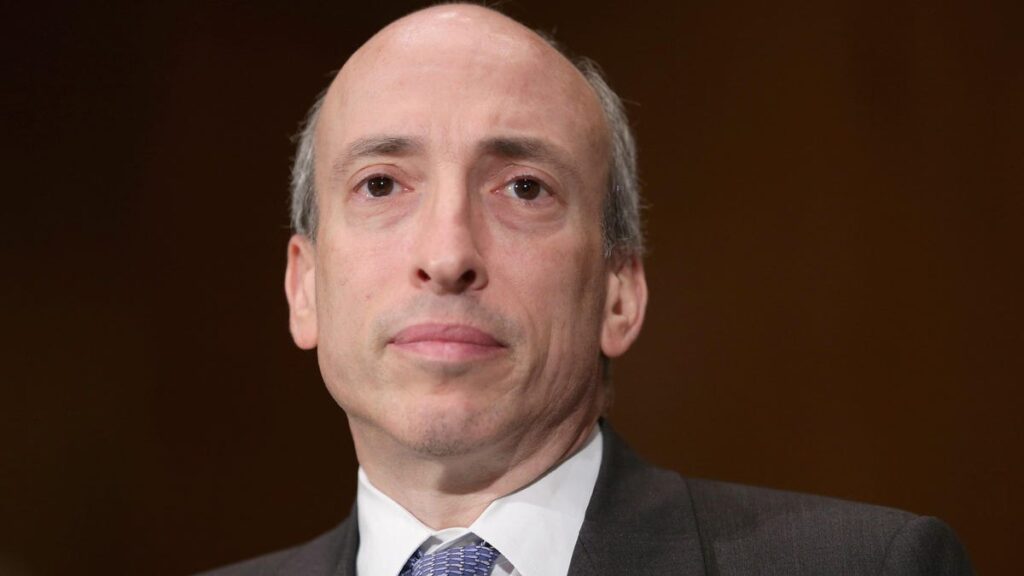The Royal Canadian Mounted Police (RCMP) in Richmond, located south of Vancouver, has issued a public warning about a concerning trend involving cryptocurrency investors falling victim to home robberies.
Over the past year, several similar incidents have been reported, prompting the RCMP to address the matter for public safety.
According to Staff Sergeant Gene Hsieh of the Richmond RCMP Major Crime Unit, the criminals behind these robberies are deliberately targeting high-value cryptocurrency investors.
In each case, the perpetrators have posed as delivery drivers to gain access to the victims’ homes. Once inside, they rob the victims of information that grants them access to their cryptocurrency accounts.
Staff Sergeant Jill Long of the Delta Police Investigative Services added that the suspects appear to have extensive knowledge about the victims’ cryptocurrency investments and their residential locations.
This suggests that the criminals are specifically targeting individuals who are heavily invested in cryptocurrencies.
While the RCMP has made one arrest in connection with these incidents, they have not confirmed whether multiple robberies are linked.
Due to ongoing investigations, specific details about the number of incidents and the amount of stolen cryptocurrency have not been disclosed.
READ MORE: Bitcoin Mining Companies Employ Derisking Strategies, Offload BTC to Exchanges
To prevent falling victim to such home robberies, the police department offered valuable safety advice.
They urge homeowners not to allow strangers or even seemingly legitimate delivery personnel into their homes.
Instead, all deliveries should be left outside, and if there is any doubt about the person’s identity, homeowners are encouraged to contact the delivery company for verification.
In cases where danger seems imminent, authorities should be notified immediately.
The RCMP also advised storing valuables and financial information securely within the household, such as in a safe or safety deposit box.
Additionally, they emphasized the importance of discussing financial matters in private, rather than on social media, and only with trusted individuals.
The warning comes after a previous incident in which a Canadian cryptocurrency investor, known as the “Crypto King,” was allegedly kidnapped, falsely imprisoned, and assaulted by five men involved in a cryptocurrency scheme.
One of the suspects, who invested a significant amount of money in the scheme, was charged with kidnapping the investor.
In light of these recent occurrences, the RCMP is urging cryptocurrency investors to exercise extreme caution and implement additional security measures to safeguard their assets and personal safety.
As the investigations continue, law enforcement authorities are working diligently to apprehend those responsible for these targeted robberies and ensure the protection of the public.
Other Stories:
Why You Should Be Bullish Despite Bitcoin Price Falling Below $30,000
Robert F. Kennedy Jr. Pledges to Back US Dollar with Bitcoin if Elected President
Bitcoin (BTC) experienced a drop below the $30,000 mark on July 18, surprising retail investors who had witnessed positive developments in the past month.
However, this downward movement does not indicate a shift in the long-term trend.
Despite the recent decline, there are positive signs to consider. Bitcoin is still making efforts to establish $30,000 as a support level, with numerous attempts since April.
Moreover, buyers consistently emerge within the $28,000 to $25,000 range, which seems to be viewed as an accumulation zone.
Glassnode’s Bitcoin Accumulation Trend Score aligns with this sentiment, revealing that larger entities are accumulating BTC rather than distributing it.
The Accumulation Trend Score indicates that buyers were accumulating from November to December and continued to do so from March to April when Bitcoin surpassed $30,000.
The score suggests that the same accumulation behavior is occurring in July, possibly due to Bitcoin’s attempt to conquer the $30,000 resistance or the positive news surrounding ETFs and XRP SEC.
The current price action and derivatives market data indicate that Bitcoin is in a crab market, characterized by a range-bound price that consolidates for an extended period.
Breaking through the $32,000 level could trigger a CME gap fill from the Luna Terra-crash era.
On a weekly market structure basis, $30,000 serves as a crucial pivot point, previously functioning as support in the last bull market cycle and now as resistance.
READ MORE: Celo Blockchain Plans Transition to Ethereum Layer-2 Solution
Surpassing this level would signify a higher high and confirm a trend reversal, with the next resistance point at approximately $37,000.
In the derivatives market, trading activity remains relatively muted, with funding down and open interest not displaying significant surges.
This suggests that a substantial breakout is yet to occur. While the recent dip in the DXY (U.S. Dollar Currency Index) may have influenced investor sentiment, it is unlikely to trigger an immediate massive reaction in Bitcoin.
Although short-term price fluctuations may concern new investors and day-traders, the on-chain perspective presents a compelling outlook.
The Total Balance in Accumulation Addresses metric has been on an uptrend since March 16, indicating that investors continue to increase their allocation to Bitcoin, even throughout the crypto market collapse and price sell-off.
It is worth noting that the metric also reveals a continuous increase in the total balance in accumulation addresses since January 2022, when Bitcoin was trading at $47,800 per coin.
This data highlights investors’ long-term confidence in Bitcoin and their ongoing accumulation of the cryptocurrency.
Other Stories:
PEPE Coin in Trouble? Financial Regulator Clamps Down On Crypto Memes
SEC Chair Gary Gensler Advocates Greater Use of Artificial Intelligence for Market Surveillance
FSB Proposes Global Regulatory Framework for Cryptocurrencies
Competition among leading development firms in the Ethereum ecosystem is driving the advancement of zero-knowledge Ethereum Virtual Machines (zkEVMs) to enhance network scalability, according to Jordi Baylina, co-founder of Polygon.
In anticipation of the EthCC conference in France, which serves as a gathering point for Ethereum ecosystem builders, zero-knowledge proof (ZK-proof) scaling tools are poised to take center stage.
Polygon’s zkEVM utilizes ZK-proofs to reduce transaction costs and boost the throughput of the Ethereum network, leveraging the security and finality of the layer-1 blockchain.
ZK-proofs have emerged as a crucial scaling tool for the Ethereum ecosystem, enabling protocols like Polygon’s zkEVM to conduct off-chain transaction computations and provide lightweight proofs to the Ethereum mainnet without compromising data privacy.
Baylina, leading the development of Polygon’s zkEVM, believes that the diverse array of projects utilizing ZK technology is highly advantageous for the broader Ethereum ecosystem.
READ MORE: Bitcoin On-Chain Data Reveals $30,000 as Most Popular ‘Buy’ Level
He emphasizes that the presence of different projects contributes valuable experience, enables the exploration of various approaches and problem-solving techniques, and allows for the identification of shortcomings that serve as learning opportunities for all ZK-based projects.
Polygon’s zkEVM is already live on the mainnet, with nearly 250,000 unique active addresses.
The increasing number of daily active addresses indicates growing user adoption and points to the platform’s expanding reach.
However, Baylina considers the number of applications building on Polygon’s zkEVM as the most crucial metric for his team.
Developer feedback and insights garnered from these applications shape protocol improvements and help address any identified issues.
Baylina cites the example of developers uncovering timestamp-related issues critical to decentralized finance oracles, leading his team to develop temporary workarounds while working on permanent solutions.
This collaborative approach with builders is instrumental in enhancing the protocol as more developers join the ecosystem.
Polygon co-founder Sandeep Nailwal has previously described Polygon’s zkEVM as the “holy grail of Ethereum scaling,” as it allows the submission of proofs to the Ethereum mainnet without the need to rerun computations on the layer-1 blockchain.
This technology holds the potential to significantly scale Ethereum, empowering developers to build decentralized applications without being hindered by the network performance of the base blockchain.
Other Stories:
Ex-Federal Prosecutor Surprised by Potential SEC Appeal in Ripple Case
3 Best Crypto PR Agencies – Fees, Results and Full Review
Web3 Needs Asset Protection, and This Startup Wants to Make it Widely Available
Unstoppable Domains, a prominent platform in the Web3 decentralized domain space, has recently announced its support for .eth domain names from the Ethereum Name Service (ENS).
This integration brings together two key players in the field, offering users a unified experience for creating human-readable domain names and cryptocurrency wallet addresses.
In early 2023, Unstoppable Domains and ENS collectively accounted for six million domain registrations, showcasing a significant increase in registrations since 2022.
With this new development, users can now purchase .eth names through Unstoppable Domains, benefiting from additional payment methods and enhanced functionality to manage ENS domains seamlessly.
Any .eth domain bought from Unstoppable will be registered through the ENS smart contract, providing the same features as domains registered directly through ENS.
One notable feature is the option to buy .eth domains from Unstoppable without connecting them to an existing Ether wallet.
Unstoppable Vault, a noncustodial service, enables users to secure Web3 domains even without initially owning a cryptocurrency wallet.
READ MORE: Aave Launches GHO Stablecoin on Ethereum Mainnet
Additionally, Unstoppable offers an auto-renewal mechanism, eliminating the need to renew .eth domains on-chain and reducing the risk of losing a domain.
The integration with Unstoppable extends the payment options for .eth users, allowing them to purchase their desired Web3 domain using various methods.
These methods include Bitcoin and 12 other cryptocurrencies, as well as traditional fiat payment options such as credit cards, PayPal, Google Pay, and Apple Pay.
Unstoppable is actively developing management tools for .eth domains.
These tools will empower users to set cryptocurrency addresses, manage on-chain profile data, and transfer .eth domains conveniently.
However, it’s important to note that while .eth domains purchased through Unstoppable can benefit from ENS integrations, they will not function with Unstoppable’s existing 800 integrations.
In addition to .eth domains, Unstoppable Domains also supports several other Web3 domains, including .nft, .crypto, .wallet, .dao, .bitcoin, .polygon, .BinanceUS, and .blockchain.
With their continued efforts to expand their services and improve the Web3 domain space, Unstoppable Domains remains at the forefront of empowering users within the decentralized internet landscape.
Other Stories:
Primed For Major BTC Rally? SEC Begins Review of BlackRock’s Bitcoin ETF Application
Former SEC Official Criticizes Ripple Ruling as ‘Troublesome on Multiple Fronts’
Binance Integrates Bitcoin Lightning Network for Lightning-Fast BTC Transactions
A wallet address holding a substantial amount of pre-mined Ethereum, valued at $116 million, has recently made a significant move.
After being dormant for eight years, the wallet transferred its entire stash of 61,216 Ether (ETH) to an address on the Kraken crypto exchange.
The pre-mined Ether was accumulated by early team members and co-founders of the Ethereum ecosystem during a sale event in June 2014.
At that time, the network was unable to generate tokens independently, so this sale allowed participants to acquire pre-mined Ether.
The tokens were valued at around $300–$400 during the pre-mine phase, making the wallet worth approximately $20 million.
However, the value of the tokens has grown exponentially over the years, and at present, they are worth over $116 million.
Data from Etherscan, a blockchain explorer for Ethereum, confirms that the 61,216 ETH were transferred to a Kraken wallet address on July 18 at 7:30 pm Eastern Time.
Remarkably, the transaction fee for moving $116 million worth of Ether amounted to only $1.5, with a gas price of 25.475673161 gwei.
READ MORE: FSB Proposes Global Regulatory Framework for Cryptocurrencies
The identity of the wallet owner remains unknown, underscoring the importance of hodling—a strategy that emphasizes long-term accumulation of cryptocurrencies.
The owner’s cautious approach is evident from the initial test transaction of 0.05 ETH sent to the Kraken address, ensuring no loss of funds due to human error.
Meanwhile, at the Ethereum Community Conference event in Paris on July 18, Ethereum co-founder Vitalik Buterin discussed the challenges associated with implementing a new blockchain feature.
He mentioned the concept of account abstraction extensions, referred to as “paymasters,” which would allow users to pay their fees using any coins they are transferring.
Buterin acknowledged the potential benefits of account abstraction for users but also recognized the need for developers to address challenges.
This includes the requirement of an Ethereum Improvement Proposal to upgrade current externally-owned accounts into smart contracts, as well as ensuring the protocol functions effectively in layer-2 solutions.
The movement of such a significant amount of pre-mined Ether highlights the ongoing evolution and adoption of cryptocurrencies, while also shedding light on the technical advancements being pursued by Ethereum developers.
Other Stories:
SEC Chair Gary Gensler Advocates Greater Use of Artificial Intelligence for Market Surveillance,.
PEPE Coin in Trouble? Financial Regulator Clamps Down On Crypto Memes
Celo Blockchain Plans Transition to Ethereum Layer-2 Solution
Fidelity Digital Assets recently released its “Q2 2023 Signals Report” on July 18, expressing a positive outlook for Ether (ETH) in both the short and long term.
While the investment firm is optimistic about Ether’s performance in the coming months, it doesn’t necessarily believe that the current bullish trend will be sustained.
To assess the accuracy of Fidelity’s analysis, let’s compare it against network and market data.
Fidelity’s bullish outlook for Ether is supported by several factors.
First, the report highlights the network’s higher burn rate compared to coin issuance, which has resulted in a net supply decrease of over 700,000 Ether since the Merge in September 2022.
Additionally, the report points to an increasing number of Ethereum addresses transacting for the first time, indicating healthy network adoption.
Furthermore, the report mentions a 15% rise in the number of active Ethereum validators during the second quarter, indicating increased participation in securing the network.
READ MORE: Celo Blockchain Plans Transition to Ethereum Layer-2 Solution
The anticipated upgrade of the leading decentralized exchange (DEX), Uniswap, is another potential bullish factor for the Ethereum network.
Uniswap v4 is expected to introduce features such as programmable buttons, native ETH support, and a singleton contract, which could improve the efficiency and cost-effectiveness of smart contracts.
If the upgrade includes the implementation of EIP-1153, it could help Ethereum regain market share lost due to high gas fees. Presently, Ethereum’s total value locked has decreased to its lowest level since April 2020.
The upgrade could also boost decentralized application activity, which has declined recently, as indicated by decreased usage of platforms like Uniswap, 1inch Network, MetaMask Swap, and OpenSea.
Despite these positive indicators, derivatives metrics have remained flat, signaling caution among professional traders.
Ether quarterly futures currently trade at a premium of 4% compared to spot markets, below the neutral threshold. This suggests reduced enthusiasm for leveraged bullish positions on ETH.
Additionally, investor sentiment may have become overly optimistic due to Ether’s 59% gains year-to-date.
A survey of North American cryptocurrency investors revealed that 46% named Ether as the top contender to surpass Bitcoin.
However, it’s important to note that the survey did not inquire about the likelihood of any coin eventually flipping Bitcoin.
While Fidelity’s analysis provides valid reasons for its bullish stance on Ether’s performance over the next 12 months, it acknowledges the challenges posed by high gas fees and reduced interest from leverage buyers in the short term.
These factors increase the chances of Ether’s price breaking below the current bullish channel support.
Other Stories:
PEPE Coin in Trouble? Financial Regulator Clamps Down On Crypto Memes
SEC Chair Gary Gensler Advocates Greater Use of Artificial Intelligence for Market Surveillance
FSB Proposes Global Regulatory Framework for Cryptocurrencies
FTX Australia, the local subsidiary of the bankrupt crypto exchange, has had its financial license canceled by the Australian financial services regulator.
The announcement was made by the Australian Securities and Investments Commission (ASIC) on July 19, and the cancellation came into effect on July 14.
However, FTX Australia will still be allowed to provide limited financial services until July 12 next year, as it wraps up its dealings with clients.
ASIC emphasized that FTX Australia is obligated to make arrangements for compensating clients until the specified date.
The exchange had approximately 30,000 retail clients and served 132 local companies, making the compensation process a significant undertaking.
In November of the previous year, ASIC had already suspended FTX Australia’s Australian Financial Services (AFS) license, which allowed the exchange to create derivatives and foreign exchange contracts for its local clients.
This suspension occurred shortly after the Bahamian-based parent company, FTX, filed for bankruptcy on November 11, 2022.
Following FTX’s bankruptcy filing, voluntary administrators from KordaMentha, an investment and advisory firm based in Sydney, were appointed to aid in the restructuring of FTX Australia and its subsidiary, FTX Express.
READ MORE: FSB Proposes Global Regulatory Framework for Cryptocurrencies
In a recent report submitted to a United States bankruptcy court, the restructuring chief for FTX’s global entity disclosed that approximately $7 billion in liquid assets had been recovered.
However, an estimated $8.7 billion worth of customer assets were allegedly misappropriated, indicating a significant shortfall.
There have been reports suggesting that FTX may re-launch as an entirely new exchange.
The restructuring team has been engaging in discussions with potential parties interested in providing financial backing for this potential reboot.
If successful, this relaunch could offer a fresh start for the troubled exchange.
As FTX Australia grapples with the cancellation of its financial license, it faces the challenging task of winding down its operations and compensating its clients.
The aftermath of the bankruptcy filing and the potential re-launch of FTX pose both uncertainties and possibilities for the future of the exchange and its stakeholders.
Other Stories:
PEPE Coin in Trouble? Financial Regulator Clamps Down On Crypto Memes
SEC Chair Gary Gensler Advocates Greater Use of Artificial Intelligence for Market Surveillance
Celo Blockchain Plans Transition to Ethereum Layer-2 Solution
Crypto firms and influencers operating in the United Kingdom may soon be required to include disclaimers on crypto-related memes to ensure compliance with advertising laws.
The Financial Conduct Authority (FCA), the country’s financial regulator, recently released proposed guidance on social media financial promotions, specifically targeting promotional memes and financial influencers, also known as “finfluencers.”
The FCA highlighted the presence of promotional memes from crypto firms that many people are unaware are subject to its promotional rules.
While promotional memes are particularly prevalent in the crypto sector, the FCA emphasized that any form of communication could be deemed a financial promotion.
Considering crypto investments as high-risk, the FCA permits their advertisement to retail investors but imposes certain requirements, such as the inclusion of risk warnings and a ban on investment incentives.
According to the FCA, in the fourth quarter of 2022, 69% of financial promotions on websites or social media from authorized firms were either amended or withdrawn following the regulator’s intervention.
To update its existing 2015 guidance and provide clearer expectations for marketers regarding promotions, the FCA initiated this consultation.
READ MORE: Web3 Needs Asset Protection, and This Startup Wants to Make it Widely Available
The FCA also expressed concern about the growing number of finance-oriented influencers promoting financial products without sufficient knowledge, particularly targeting younger audiences.
It warned influencers that promoting financial products without adequate expertise could result in legal consequences, including up to two years of imprisonment, an unlimited fine, or both.
The law applies not only to promotions originating outside the UK but also those that may impact the country.
To support its stance, the FCA referred to a report indicating that over 60% of individuals aged 18 to 29 follow social media influencers, with three-quarters expressing trust in their advice.
A 2021 FCA survey revealed that 58% of respondents under 40 cited social media hype and news as reasons for investing in cryptocurrencies, which the regulator deems a high-risk product.
In summary, the FCA’s proposed guidance aims to ensure compliance with advertising laws by requiring disclaimers on crypto memes and warning financial influencers about the legal consequences of promoting financial products without sufficient knowledge.
This move intends to safeguard consumers, especially younger individuals who may be influenced by social media endorsements.
Other Stories:
Bitcoin On-Chain Data Reveals $30,000 as Most Popular ‘Buy’ Level
3 Best Crypto PR Agencies – Fees, Results and Full Review
Ex-Federal Prosecutor Surprised by Potential SEC Appeal in Ripple Case
Gary Gensler, the chair of the United States Securities and Exchange Commission (SEC), has expressed his belief in the potential benefits of artificial intelligence (AI) for the agency’s staff.
In a speech delivered on July 17 at the National Press Club, Gensler outlined several areas where AI could assist the SEC in its role as a securities watchdog.
Gensler emphasized the value of AI in market surveillance, disclosure review, exams, enforcement, and economic analysis, stating, “We at the SEC also could benefit from staff making greater use of AI in their market surveillance, disclosure review, exams, enforcement, and economic analysis.”
The chair highlighted the importance of leveraging AI to enhance the efficiency and effectiveness of regulatory processes.
While Gensler did not provide specific details on how the SEC could employ AI, he praised the technology and its potential positive impact on financial markets and humanity as a whole.
He acknowledged the transformative nature of AI, comparing it to other groundbreaking technologies such as the internet and mass production of automobiles.
However, Gensler also acknowledged the lingering issues associated with AI. He pointed out that many AI systems suffer from biases, deception, privacy infringements, and conflicts of interest.
Biased predictive AI models, for example, may inaccurately reflect historical biases, leading to false predictions.
READ MORE: Web3 Needs Asset Protection, and This Startup Wants to Make it Widely Available
Gensler himself fell victim to misinformation when a fabricated AI-generated text of his resignation circulated online.
Conflicts of interest can arise when AI systems prioritize company interests over customer interests.
Gensler highlighted the need for the SEC to address potential conflicts across various investor interactions and requested recommendations from SEC staff for rule proposals.
Moreover, Gensler expressed concern about the emergence of AI monopolies and their potential impact on the economy, even suggesting a potential role in future financial crises.
He emphasized the SEC’s commitment to taking action against fraudsters who misuse AI to deceive the public, asserting that fraud remains fraud regardless of the technology employed.
In an interview with Yahoo Finance, Gensler reiterated the SEC’s responsibility to pursue those who employ AI for fraudulent purposes, emphasizing that the regulator is authorized and mandated by Congress to take action against such misconduct.
Overall, Gensler recognizes the immense potential of AI in enhancing the SEC’s capabilities as a regulatory body.
While acknowledging the challenges and risks associated with AI, he remains committed to leveraging its benefits while addressing its shortcomings to ensure the integrity and protection of investors and financial markets.
Other Stories:
3 Best Crypto PR Agencies – Fees, Results and Full Review
Bitcoin On-Chain Data Reveals $30,000 as Most Popular ‘Buy’ Level
Web3 Needs Asset Protection, and This Startup Wants to Make it Widely Available
Cathie Wood, the CEO and founder of ARK Investment Management, has expressed her optimism about Coinbase following Ripple’s recent legal victory over the Securities and Exchange Commission (SEC) on July 13.
While Wood acknowledged that the ruling did not entirely favor Ripple, she still viewed it as a positive development for cryptocurrency exchanges as a whole.
Wood’s sentiments align with those of other experts in the crypto industry who believe that the ruling, which determined that XRP tokens sold on exchanges were not securities, could set a favorable precedent for Coinbase and Binance in their ongoing legal battles with the SEC.
Despite receiving a Wells notice in March and facing a lawsuit from the SEC in June, Coinbase’s share price did not reach new lows, indicating resilience in the value of the company’s stock.
READV MORE: Ex-Federal Prosecutor Surprised by Potential SEC Appeal in Ripple Case
On July 17, three of Wood’s ARK Investment exchange-traded funds (ETFs) took advantage of Coinbase’s recent rally and sold a total of 248,838 shares, amounting to $26.3 million at the time.
This came after the ARK Innovation ETF sold an additional $12 million worth of Coinbase stock on July 11.
Coinbase’s shares have seen a significant surge since the beginning of 2023, starting at $33.60 per share and reaching $105.55 at the time of publication, marking an increase of over 184%, according to TradingView data.
While many industry insiders are becoming increasingly bullish on Coinbase, analysts from Berenberg Capital Markets have cautioned that several regulatory aspects concerning crypto exchanges are yet to be resolved.
In an investment note on July 17, lead analyst Mark Palmer highlighted Coinbase Earn, a product offering yield on crypto staking, as particularly vulnerable to being classified as a security.
Palmer’s concerns stemmed from Judge Analisa Torres’ remarks in her ruling on the Ripple case.
In conclusion, Cathie Wood’s positive outlook on Coinbase in light of Ripple’s legal victory reflects a growing optimism within the crypto industry.
However, analysts warn that regulatory challenges for crypto exchanges are still unresolved, and specific products like Coinbase Earn may face scrutiny.
Other Stories:
Web3 Needs Asset Protection, and This Startup Wants to Make it Widely Available
Bitcoin On-Chain Data Reveals $30,000 as Most Popular ‘Buy’ Level




